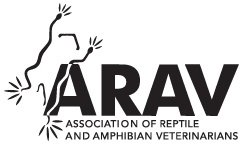Vomiting and Gastrointestinal Obstruction in a Red-Footed Tortoise (Chelonoidis carbonaria)
A 27-yr-old female red-footed tortoise (Chelonoidis carbonaria) was presented for examination because of an acute onset of frequent vomiting. Plasma biochemistry and blood gas results revealed that the tortoise had hyperproteinemia, hyperglycemia, hypochloremia, and metabolic alkalosis. A computed tomography scan showed a focal dilation of the proximal duodenum with a fluid filled duodenum and stomach. A plastronotomy followed by a gastrotomy were performed and a phytobezoar was removed from the pyloric antrum. The metabolic disorders and anorexia resolved over the following three weeks. The tortoise appeared healthy a year later with no recurrence of gastrointestinal signs. Obstructive phytobezoar appears to be a rare occurrence in tortoises. This report documents the metabolic disturbances and advanced imaging findings observed with proximal gastrointestinal obstruction in a chelonian patient.Abstract

Computed tomography scan images of a red-footed tortoise diagnosed with a gastrointestinal obstruction. (A) Cross-sectional image, soft tissue window; (B) coronal image, soft tissue window. The duodenum (arrow) is dilated as it exits the stomach (S), and gas is seen branching in the liver (L). Lu, lungs; O, ovarian follicles.

Plastronotomy in a red-footed tortoise diagnosed with a gastrointestinal obstruction. P, plastron fragment; H, heart; L, liver; S, stomach; C, coelomic membrane.

Phytobezoar removed from the pyloric antrum of a red-footed tortoise with signs of gastrointestinal obstruction. It is shown after dissection. A #15 scalpel blade is shown for size.



